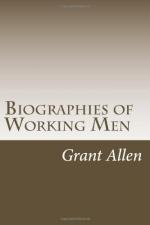VI.
James Garfield, canal boy.
At the present time, the neighbourhood of Cleveland, Ohio, the busiest town along the southern shore of Lake Erie, may fairly rank as one of the richest agricultural districts in all America. But when Abram Garfield settled down in the township of Orange in 1830, it was one of the wildest and most unpeopled woodland regions in the whole of the United States. Pioneers from the older states had only just begun to make little clearings for themselves in the unbroken forest; and land was still so cheap that Abram Garfield was able to buy himself a tract of fifty acres for no more than 20 pounds. His brother-in-law’s family removed there with him; and the whole strength of the two households was immediately employed in building a rough log hut for their common accommodation, where both the Garfields and the Boyntons lived together during the early days of their occupation. The hut consisted of a mere square box, made by piling logs on top of one another, the spaces between being filled with mud, while the roof was formed of loose stone slabs. Huts of that sort are everywhere common among the isolation of the American backwoods; and isolated indeed they were, for the Garfields’ nearest neighbours, when they first set up house, lived as far as seven miles away, across the uncleared forest.
When Abram Garfield came to this lonely lodge in the primaeval woodlands, he had one son and one daughter. In 1831, the year after his removal to his new home, a second boy was born into the family, whom his father named James Abram. Before the baby was eighteen months old, the father died, and was buried alone, after the only possible fashion among such solitary settlers, in a corner of the wheat field which he himself had cleared of its stumps. A widow’s life is always a hard one, but in such a country and under such conditions it is even harder and more lonely than elsewhere. Mrs. Garfield’s eldest boy, Thomas, was only eleven years old; and with the aid of this one ineffectual helper, she managed herself




